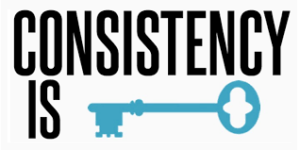The Trend of Declining Consumer Trust

There has been a trend in the declining of consumer trust in all industries and organization. Consumers have turned away from traditional sources of expertise and now use the web as a vehicle of verification.
We tend to trust our peers more and look to the recommendations, reviews and experiences of fellow shoppers before making decisions or purchases.
But be warned, that false reviews and filter bubble awareness have sullied that space.
In an upcoming book by brand and content strategy consultant, Margot Bloomstein, appropriately titled “Trustworthy”, the author questions our reliance on reviews.
“Why don’t we all see the same reviews? Why should the choices of friends influence the ads and news we see? Isn’t it safer to just turn inward and go on gut instinct? That skepticism and cynicism can bog down brands trying to engage consumers. Why should they bother with your blog or even open marketing emails if you’re just pushing the latest and greatest?” Ms. Bloomstein inquired.
Building trust with customers is key in this kind of environment. Trust is the first principle of conversion. This is according to Alex O’Byrne the co-founder of Shopify Plus Experts “We Make Websites”.
Fortunately, there are many steps you can take to establish trust on your clients’ ecommerce sites or your apps, to reassure and engage customers. Here are ten ways to begin.
1. Good Impressions Are Remembered!

Make A Good First Impression
“We Make Website” co-founder Alex O’Byrne noted that a graphic designer once referred to design as “the silent ambassador of your brand”, and therefore trust begins there.
We know that in the age of mobile, the website should look beautiful and be responsive. (able to adapt to all device sizes). The site should be “fast, with easty to absorb content, sinpiring imagery and simple navigation.” According to Alex.
The website should showcase your products in an informative way. This means clear imagery from multiple angles. The descriptions of the product should outline everything that the customer may want to know about the product. This includes the care, delivery, warranties and information about your return policy.
Web performance is a necessity. The site must be fast! If the site is slower than Amazon, it will impact credibility.
2. Use Trust Signals

The Only Thing To Fear, Is Fear Itself!
Unless the business is a household name, one of the biggest challenges you have to deal with is the site vistor’s fear. That is, the fear of buying from a small business. This information comes directly from SEO consultant and trainer, Danny Richman.
“Use clear trust signals such as third-party reviews (for example TrustPilot and Feefo), security seals, free returns, and a physical location on your contact page to reduce any perceived risk,” he recommended.
It is also recommended to use subconscious trust signals. You can do this via well written copy and high quality images. Danny explained that “visitor instinctively know that an unscrupulous company is unlikely to invest in good design. Once a licent knows that they have a product people want, at a price they are willing to pay, they should invest as much as they can afford in creating the best possible online experience.”
Humans are the social animals that trust the opinion of others and Alex suggested using social proof like customer reviews and recent press to convince visitors of the business’ worth.
The more transparent designers are, the more people are likely to trust them as legitimate. This would include the attribution of stock photos and colophons for content.
3. Showcase The Products

You should rely on engaging visuals because people tend to rely on them to drive their purchases.
According to Amanda Loftis, digital content creator, copywriter, and graphic designer, “No matter what you’re selling, good looking photos help built trust and credibility.” Loftis recommended focusing your efforts on making products look great. “Since online buyers might not have the option to experience your products in person, it is important to draw them in with great product photos..” she pointed out.
Great Photos Are Key
You should make sure product photos are clear, crisp and well lit. Even if you don’t have the resources to set up elaborate photoshoots. Bonus points for lightly stylized shots of products next to a plant or another beautiful prop!
4. Empathize With Your Users

In order to gain trust you must show empathy towards your users.
According to Brett Harned, Director of Education at TeamGantt, a provider of project management software, this means understanding what they need. You should provide helpful and easy to find tutorials, help docs, and educational material that will help users to not only use an app like a pro, but to succeed in their roles.
Marcela Sapone, CEO and co-founder of home service startup Hello Afred, in her article Designing UX for Trust, says that “if we want to build empathy into the UX of our products, we have to imagine and visualize ourselves.” We must also ,eep in mind the others who are using the product, day in and day out.
Be Sure To Show Empathy To Your Users
You should consider when the product is used and if the designs hold up. Sapone also explained “What value have we created with this micro interaction to earn the right to a users’ valuable time and attention? Also, if we’re repeatedly asking a customer to provide the same information he’s already submitted several times, we’re not being empathetic. Can we display his saved preferences, at the perfect time in the right context, and earn goodwill instead?”
5. Remember to Follow Usability Principles

You must remember to build trust with users and clients. This is the most important task designer face. Racel Anderson, a UX designer, advised that the first principle that designers need to follow to create products that users trust is to recognize that usability and accessibility are the foundations of building trust through design.
Anderson explained that “users will only trust systems they can understand. We can facilitate this by offering translation options, minimizing technical jargon, and conducting user research. If we understand our users, they will understand us.”
Be Clear In Your Messaging
The second principle is to be clear in your messaging. “Tell users exactly why a page won’t print or load and ensure privacy, prices, and policies are absolutely clear.”
Rachel concludes with a reminder of “creating with kindness.” This means avoiding dark patterns, not forcing decision, and giving the user freedom and control. “Remember, users will trust products that help them accomplish their goals. As designers, we have an incredible opportunity and responsibility to build trust by designing products and systems that are usable and accessible for everyone. Now that’s what I call “pixel perfect”.”
6. Ensure the Ecommerce Experience Is Accessible

Trust is a crucial part of using sites and apps for the 15 to 20 percent of people who have disability. This is highlighted by Devon Persing, a senior UX developer specialized in accessibility at Shopify.
“If a user has difficulty using a product because of a disability, they may feel a loss of trust in that product or brand. Using semantic markup and code standards is important for accessibility, but so is the impact on usability. Ambiguous messages, unclear instructions, complex custom controls, reliance on visuals and inconsistency may be barriers.”
Accessibility, as also pointed out by Devon, is considered a technical problem, but that it is a product problem. “It starts with planning, then continues through design, development, and feedback from users. Making accessibility work part of each stage of the product life cycle is crucial, and so is getting and acting on feedback from users.”
7. Be Vulnerable!

Margot Bloomstein, Brand and content strategy consultant, recommends that in order to engage customers and establish trust, you have to use a mix of two ingredients. That is a mix of vulnerability and validation.
“Vulnerability is a buzzword, often shared in earnest tones among words like “empathy” and “authenticity”. But how can you practice vulnerability in design?”
One of her suggestions is to first tone down the polish. This does not mean you should embrace typos, but it is alright to go with the soft lauch. Share and label sites, new products and apps in beata. So your users know the team behind the brand is working to create something great for them.
“Even Shopify does this, such as when it first launched multilingual support. Was it perfect? No. But was that a reason to delay, or an opportunity to launch and gather input?”
Beyond beta launches, Margot recommended embracing language that speaks simply and in the first person about decision making processes. We have decided to delay the release engenders interest, sympathy and support in a way that due to shipping issues, the release will be delaed never can.
8. Validate Customers’ Beliefs

Meet Your Customer Where They Are
Meeting customers where they are, is another way to establish trust. Then move them to your client’s offering is to validate their beliefs, emotions, and lived experiences.
“You can play a role in rebuilding the trust of your consumers not by ignoring the negative experience they had, but by acknowledging and validating their beliefs,” Margot Bloomstein explained. “Consider how America’s Test Kitchen begins many educational articles.
Though the research powerhouse is eager to bring its latest discoveries to home cooks, many articles start by acknowledging their frustration. (“We’ve all been there.” If you’re not sure where to start, you’ve come to the right place.). In How to Use a Digital Thermometer and Never Overcook Meat Again, the shared experience is right in the title; the secret to success resolves in the subtitle. The Test Kitchen builds on those bad experiences, using common vocabulary and readers’ current mindset as a point of departure ofr new ideas and further reading.”
Margot concluded that education drives empowerment. Therefore; when you empower users’ confidence, the brand will reap the reward in greater trust.
9. Build Trust Over The Long Term

Often missing from a discussion about building trust are these two elements. Time and team communication. This says user experience expert JD Graffam.
Building Trust
“A lot of folks talk about establishing trust through a user interface by designing things that feel human, sound hman, and convey transparency. This is good practical advice, but in real life, we know that trust takes a long time to establish and very little to undermine.
More than a decade ago, my wife and I learned abou the 5:1 ratio for a healthy relationship. This principle applies to establishing trust in anything, not just marriage, it’s just as true when you run an online business.”
You have to stay focused on every interaction you have with your customers over a long period of time. It’s way easier to screw up than it is to get right. This is easy for founders and small teams to handle, because a founder or small group of people with shared values will naturally act consistently.”
10. Be Consistent In How You Communicate A Brand and Its Values

As a business grows, it must invest in internal communications around its brands and vlues, as recommended by JD Graffam.
Consistency Is Key
“A growing team must know what the business stands for, otherwise they won’t consistently represent it. It doesn’t matter whether you’re a designer, customer support person, marketing specialist, developer or contractor, everyone on the team needs to know what the brand stands for, so they can treat the customers consistently. Consistency over time is the key to earning trust.”
“Building any business takes time, because earning the customers’ trust takes time. Consistency times time. I run several SaaS businesses, online stores, and two agencies. In each business, I take the long term approach. Once trust is established, it lasts decades wway longer than it takes to read an email, tap a button, and enter some payment details.
If you’re like me and want to build a generational business, then take the time and spend the energy it takes to earn your customer’ trust. Don’t screw it up by being short sighted.”
Trust If The First Principle Of Conversion

Establishing trust on an ecommerce site or app is crucial. Especially in today’s world of misleading privacy practices and fake news. If you get it right, you will earn your customers’ trust. This will translate to a powerful boots in your conversions.
The professional quality of the sites app’s design are essential factors. First impressions are lasting. The same as the performance and security will reassure users. Show empathy to your users. Make your experiences usable, accessible and consistent. Be patient. Building a trustworthy image takes time.





